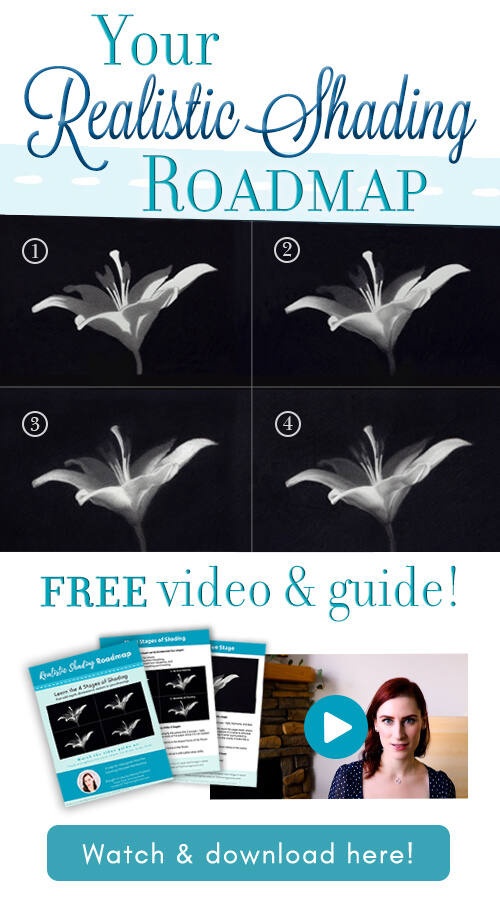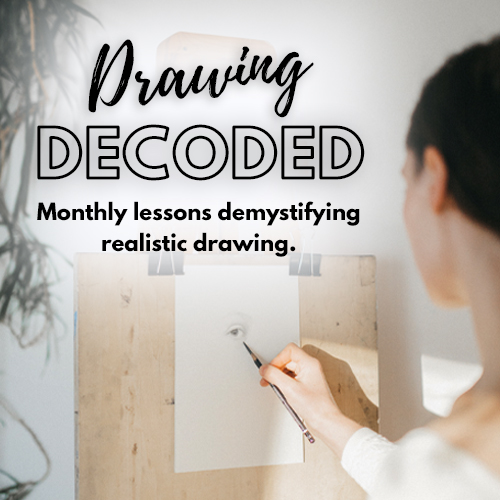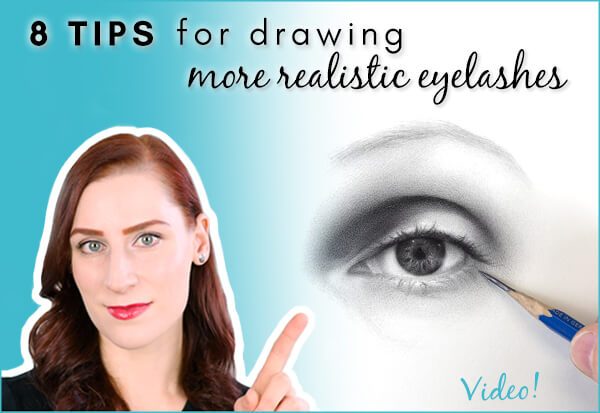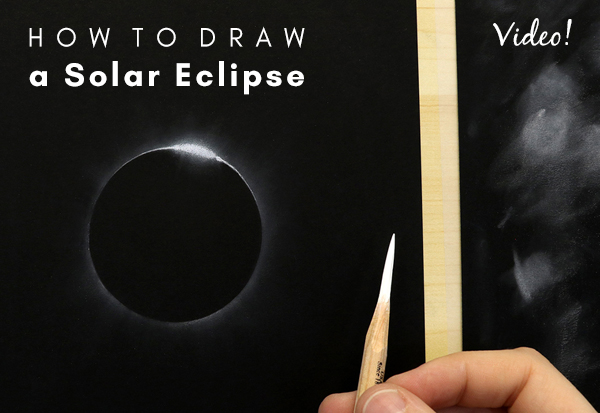An Interview with Hollis Dunlap
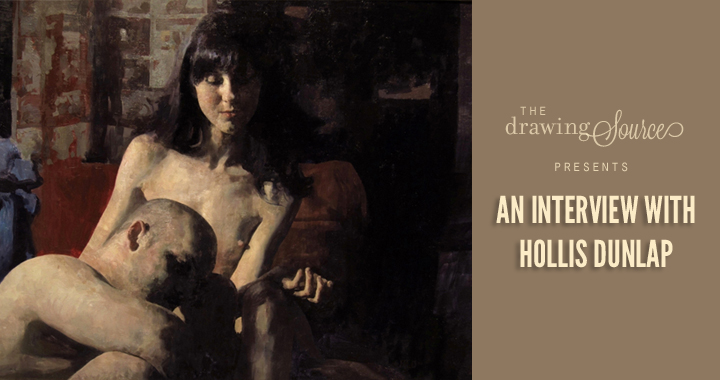
I am thrilled to present an interview with phenomenal artist and draftmsan Hollis Dunlap. I have long been inspired by his engaging compositions, individual painting style, and symbolic imagery.
Form in Hollis's works poetically deconstructs into vivid, vibrating color and pattern, yet simultaneously assembles into exquisitely composed scenes that evoke a sense of reflection and reminiscence. In the questions below, Hollis gives us insight into his painting process, influences, and themes he is exploring, before delving into the question that inspired this interview series: "What is drawing to you?"
An Interview with Hollis Dunlap
Marina Fridman: Can you give us some insight into your painting process? How do you begin a painting, and what stages do your works tend to go through?
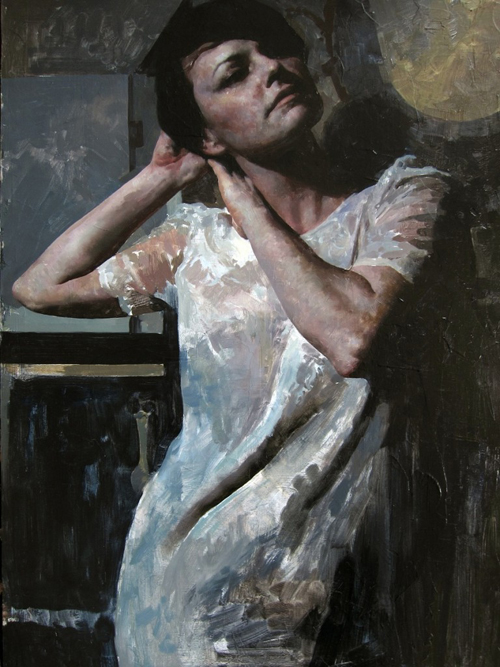 "Susan" by Hollis Dunlap
"Susan" by Hollis DunlapHollis Dunlap: When I first started painting up until a few years ago, I would usually draw things out first in a darker tone, as someone would do if they were using a pencil or charcoal.
Then I would essentially fill in the colors, which I still do every few paintings. Lately I have been working a little differently -- after doing a very basic block in with lines and angles with thin paint, I paint the brightest lights first in big blocks of color, and "draw into" the paint.
There is something satisfying about this, maybe it's due to my impatience, but I like to see colors and a sense of lighting happen fast. I think that gives a more beautiful and convincing sense of light, and it allows me to paint more quickly.
I try to pay attention to big angles so that the details look good
by the time I get to them.
I then try to gradually work from bigger shapes to the smaller shapes, always keeping an eye on the values and lighting so that each detail falls into place within the total form. I try to emphasize hard and soft edges quickly, which helps achieve a sense of light and form.
Before I add any detail, I redo the big shapes so that the major proportions are as accurate as possible. If a painting has nice detail, but a bad sense of proportion, it really bothers me, so I will make several revisions as I go. As I revise things I start to experiment more with the texture, with thick or thin paint.
If any part doesn't work, out of proportion or whatever, I will repaint it until it works, even if it takes 10 tries. In addition to color, I make a lot of changes having to do with the flow of the eye throughout the composition. Moving an arm or leg a millimeter makes a huge difference, especially in a small painting.
Sometimes I have a painting sitting around unfinished for a year, and finally I will look at it and figure out what it needs. This could be as simple as adding a color, or more complex things like adding or subtracting a figure. I am looking at one right now where I completely repainted the background and the arm of a figure after staring at it for a year.
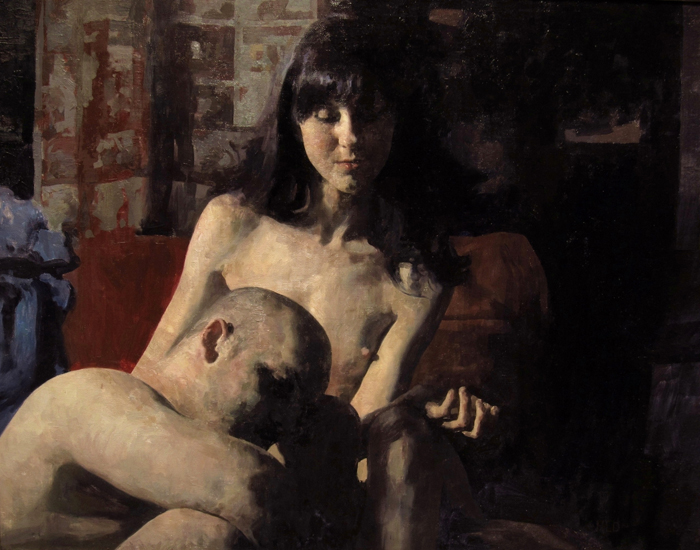 "2 Figures" by Hollis Dunlap
"2 Figures" by Hollis Dunlap
Marina Fridman: Your paint application is enthralling - the painted skin tones seem to flicker almost as though made of energy, yet the form of the body appears convincingly solid. How did you go about developing a technique that is unique to you?
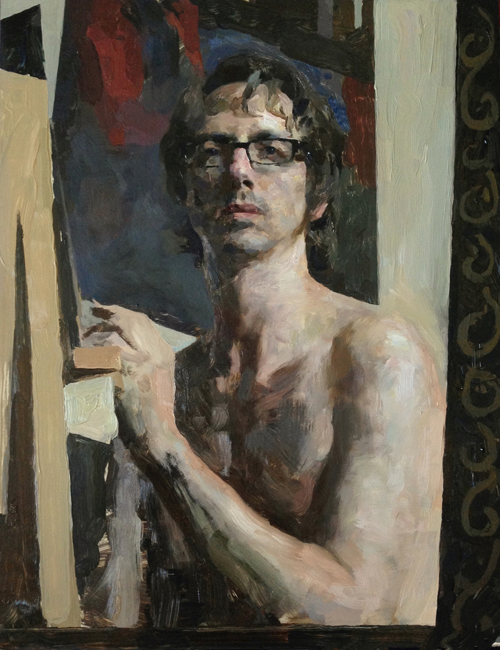 "Self, July 2015" by Hollis Dunlap
"Self, July 2015" by Hollis DunlapHollis Dunlap: Thank you! My technique really comes from being interested in many different styles of painting, and trying to take a little from each.
It comes from copying many master paintings when I was younger, to painting on location for many years, and also from each teacher that I had that influenced me.
I enjoy the look and feel of oil paint, so when I paint I try to retain the look of wet paint, regardless of the subject matter. Visually, transparent oil paint looks the best to me out of any painting medium.
I love Baroque Italian and Spanish painting, and I also love 19th century impressionism, so I like to combine some of the brushwork of someone like Degas or Monet, with elements of Italian painting which is generally smoother and more imitative of sculpture.
If you study color, you start to see how skin tones reflect the colors around them, which could account for some of the look of the skin tones. For paint application, I first began painting by working on landscapes on site, so I developed a quick painting style in order to capture light effects that were constantly changing. When you are painting very quickly, you tend to add a lot of paint (at least I do) or you might not get very far.
This helped build my confidence after doing it over and over for years. Even if the paintings weren't very successful, it was great experience. Sometimes hard for me to decide what technique I want to use; lately I have wanted to do smoother paintings, but as soon as i do a few of those i want to do a few spontaneous ones.
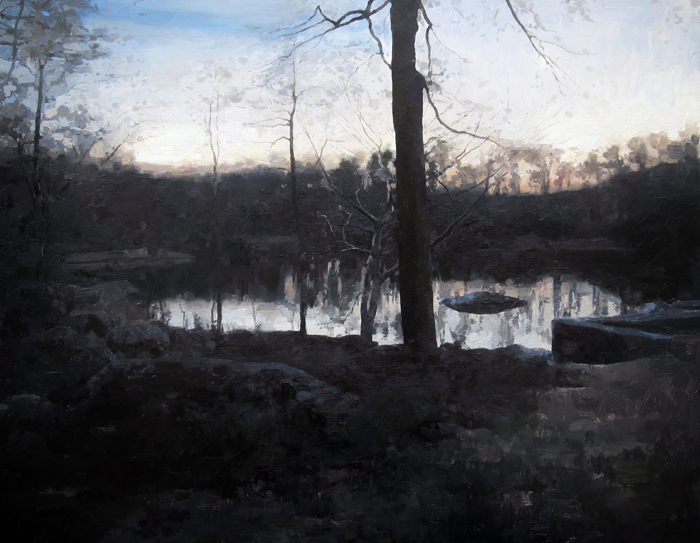 "Arboretum" by Hollis Dunlap
"Arboretum" by Hollis Dunlap
Marina Fridman: What are some of the themes that you are currently exploring in your work?
Hollis Dunlap: I have been trying to make the poses more interesting in my figure paintings, and trying to use the colors to evoke certain feelings. One painting I recently started is a woman curled up in a ball, in sort of a womb like position. I have been thinking of doing more of that sort of thing, sort of referencing the cycle of life and death.
"I am very interested in how people age, the passage of time, and the way that history repeats itself. "
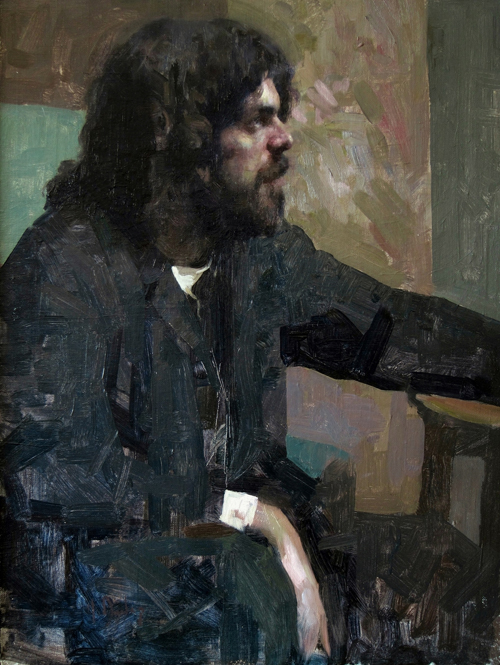 "Man in Violet and Green" by Hollis Dunlap
"Man in Violet and Green" by Hollis DunlapIt occurred to me lately that most of us have been alive for a small blip in time, and the majority of time we have been here in other forms. Maybe it's because I am getting older that I am thinking about that!
I have a large
painting here where there is a circular shape behind the figure, that
sort of looks like she is about to be abducted by a UFO....I suppose I
find that interesting, hah hah. I am also interested in dreamlike
states, like the moment before one falls asleep. I am starting to
experiment with the environments in the areas around my figures, and
just making things up instead of working with what might actually be
there in front of me.
Even though I've been thinking about those things
my whole life I only have a few recent paintings that even scratch the
surface of these ideas, but I am excited about it.
I
also just like very simple, natural things like the way a light will
enter a room and hit a wall. I have been trying to paint areas more
abstractly, and to pay more attention to values and color. Since I
paint a lot of figures, I have been trying to make my figures look more
iconic and less like a portrait. Generally I find the best portraits to
be when the painter is free of the constraints of having to flatter the
sitter in one way or another.
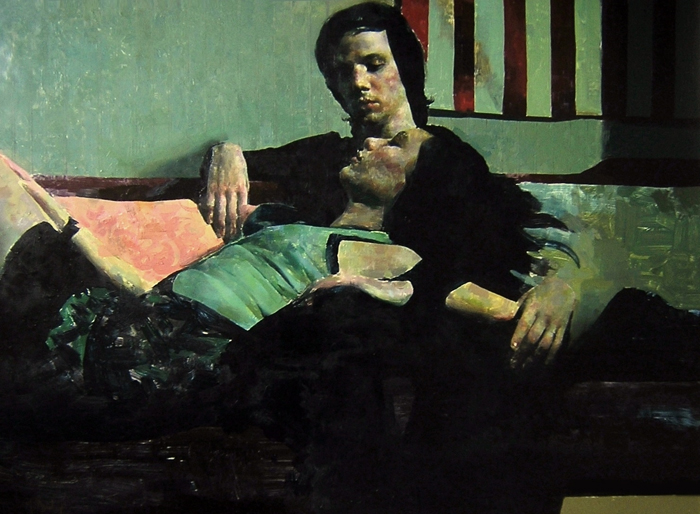 "Dreaming Girl" by Hollis Dunlap
"Dreaming Girl" by Hollis Dunlap
Marina Fridman: What do you find most compelling about the figure?
Hollis Dunlap: So many things. For me the figure is a sort of symbol for all our experiences as beings on this planet. It's a way of communicating universal feelings through time to other people, long after we are gone. I love the way that nature has its own way of sorting out rhythms in forms in the most graceful ways, the way that the human body grows and develops, the way that each part plays a role and is essential for the body to function.
I think it's fascinating that the inherent code in our DNA makes each bone grow in such a way as to perfectly function with every other form. I guess it's the will to survive that makes things grow in the most optimal and logical ways. I also enjoy the way the body looks physically; I think form itself is interesting and beautiful, especially in the lines and the way that it reflects light.
Something about portraying the 3 dimensional space on a 2D surface is interesting, and I always get excited when I am painting and the sense of form starts to emerge, when the painting takes on a more real feel than just a sketch. Sometimes people respond more to a mirror of reality than the actual reality in front of them.
"Sometimes people respond more to a mirror of reality than the actual reality in front of them."
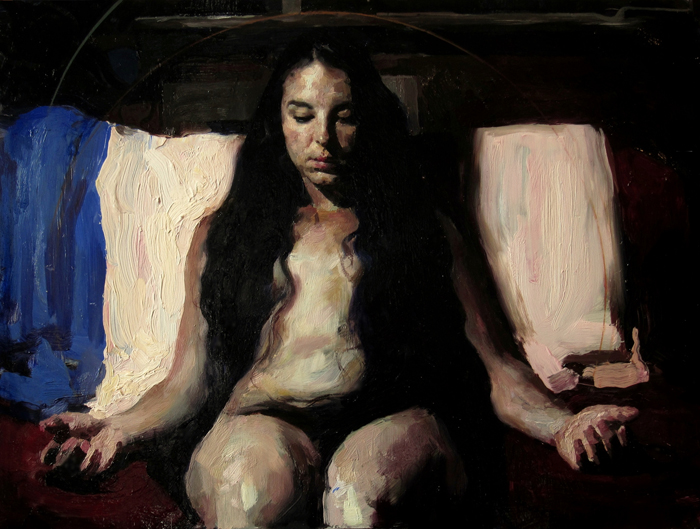 By Hollis Dunlap
By Hollis Dunlap
Marina Fridman: What is drawing to you, and what role does it play in your work?
Hollis Dunlap: To me drawing is the act of making visual choices. It's not about charcoal, or paint, or whatever medium you are using -- it's how a person sees the picture plane and arranges it. So in a sense, for me drawing is composition. It seems strange to say that drawing would have to involve a pencil or charcoal, since when I paint I feel that I am doing a lot of "drawing."
"Drawing is the act of making visual choices. It's not about charcoal, or paint, or whatever medium you are using -- it's how a person sees the picture plane and arranges it."
It's also about experimenting, and choosing which line is best
suited for the piece of artwork. For example, if you look at the
drawings of Raphael, he is often drawing several different contours
around an arm, so that he can find what looks the best to him. To me
that is the essence of real drawing -- an artist choosing what looks the
absolute best, rather than copying a form. Renaissance art is probably
the pinnacle of this for me -- Michelangelo comes to mind.
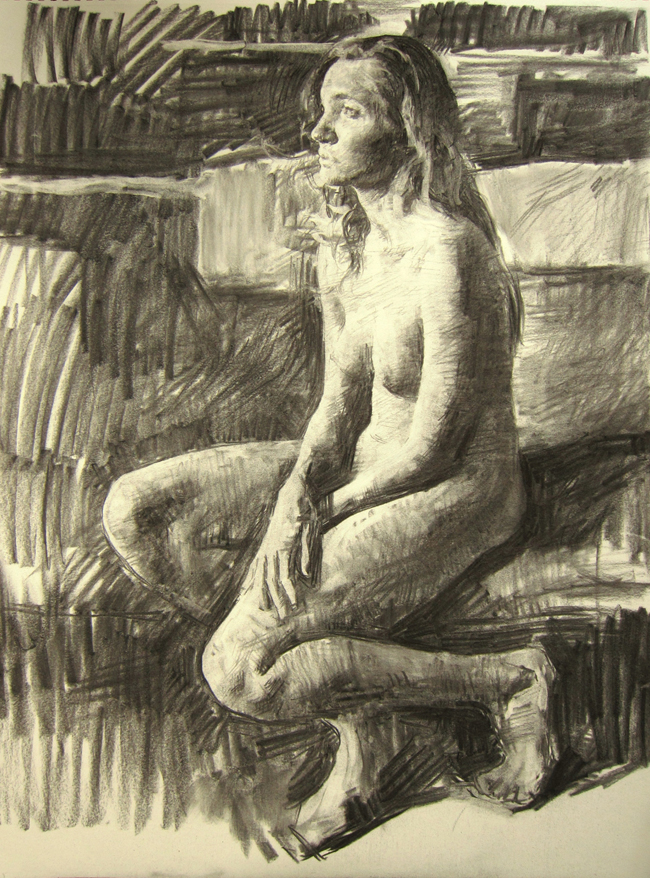 "Early," drawing by Hollis Dunlap
"Early," drawing by Hollis Dunlap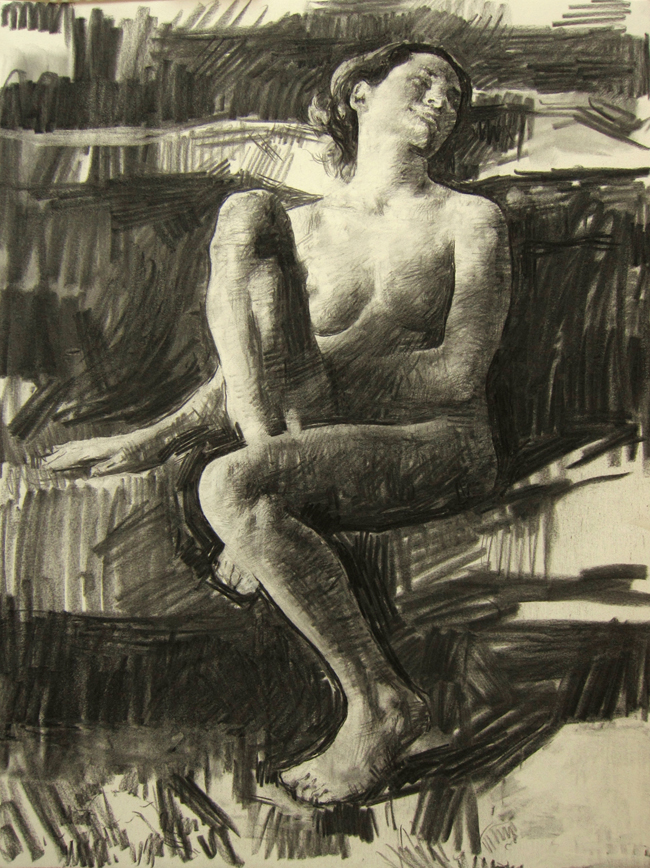 "Smile," drawing by Hollis Dunlap
"Smile," drawing by Hollis Dunlap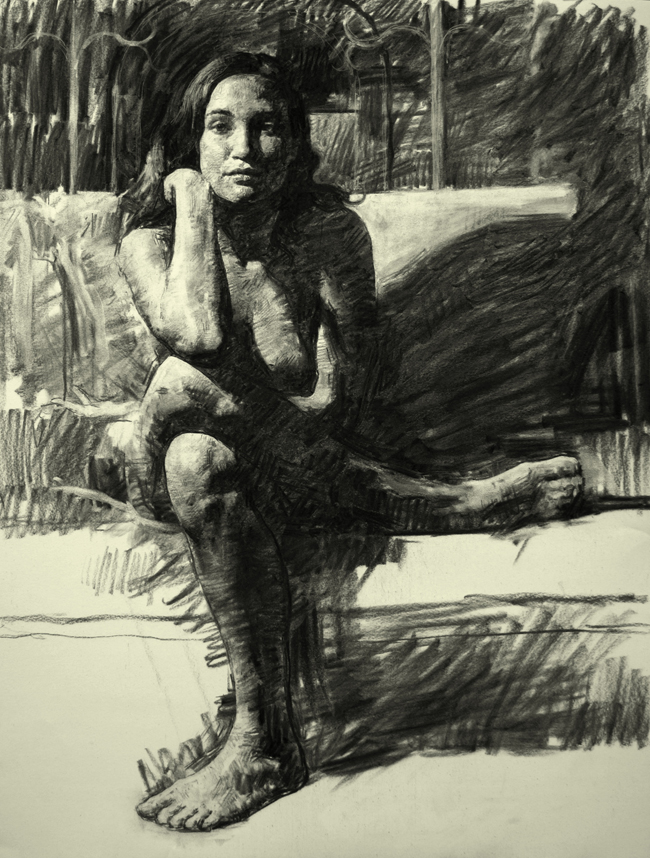 "Kassey's Shadow," drawing by Hollis Dunlap
"Kassey's Shadow," drawing by Hollis Dunlap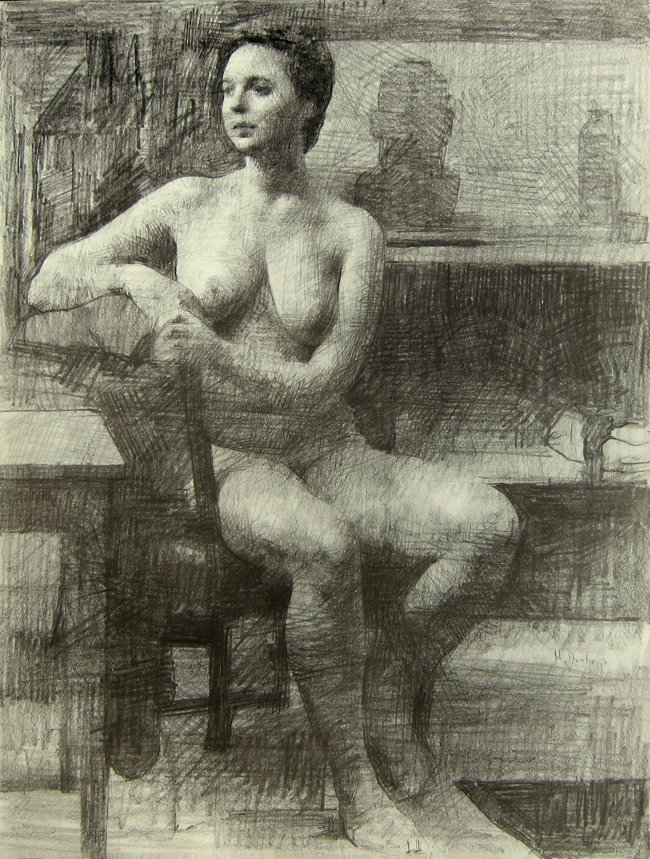 "Helen," drawing by Hollis Dunlap
"Helen," drawing by Hollis Dunlap
Marina Fridman: You seem to pay utmost attention to composition. Even in your drawn figure studies, the compositions seem very considered and intentional. How did you go about studying composition? Are there any artists in particular that inspire your compositional decisions?
Hollis Dunlap: Composition was always important to me, probably because I enjoy the construction aspect of painting, that sense of building. I like to see how nothing becomes something. When I was a kid I liked making things out of legos, and other types of toys you could build with. So I suppose that building helped that part of my brain.
When I started painting, I did a lot of 2-3 hour paintings on site. Making a lot of quick paintings gets you thinking about composition a lot, since you are re-starting each time, as opposed to doing a 40 hour painting where you start once and are refining things the next 35 hours. (I love the 40 hour ones too but I usually don't have a model for that long!) I also took classes in college at the Lyme Academy that were specifically focused on composition, and experimenting with certain ideas.
Many artists are incredible at composition, but my favorites are probably Caravaggio, George Inness, Vermeer, and Edward Hopper. I also love Rembrandt's drawings. He was constantly experimenting and was incredible at arranging a space with multiple figures and objects. I think if you study Renaissance art, you start to absorb some of the sense of composition, since they were always arranging huge numbers of figures, perspective, architecture, etc.
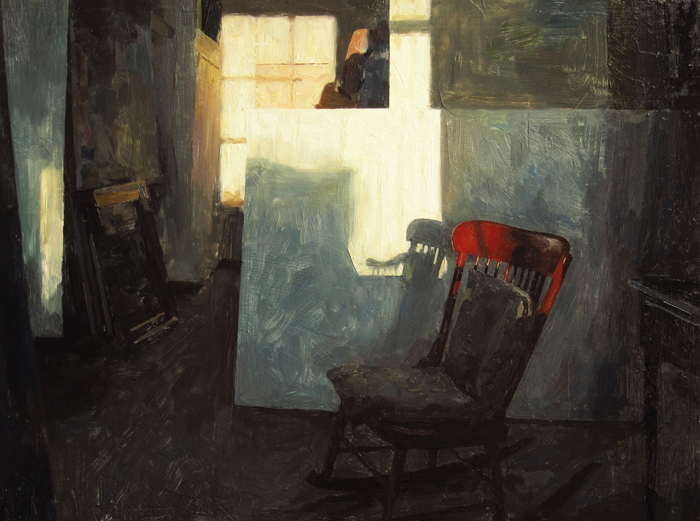 "Empty Chair / You're Not There" by Hollis Dunlap
"Empty Chair / You're Not There" by Hollis Dunlap
Marina Fridman: What artists, either historical or contemporary, have had the greatest influence on your work?
Hollis Dunlap: Off the top of my head Caravaggio, Vermeer, George Inness, Michelangelo, Velazquez.....I love Spanish painting, particularly Baroque era. Lucien Freud, Euan Uglow have been interesting me lately for lighter color tones and interesting paint surfaces. For living artists, I can name so many, but I won't since I inevitably forget someone very important to me.
All of my teachers at Lyme Academy from 1995-99 helped me and I was very fortunate to be able to study with such a diverse group of artists, all of whom worked in different techniques. I think it's so important to not be overly influenced by one artist; I don't like it when I see someone imitating their teacher too closely. My teacher Deane G. Keller was a big influence on me, but I couldn't be too influenced by his actual techniques, since his specific abilities were/are beyond what I am capable of, at least until I become much more disciplined at learning anatomy.
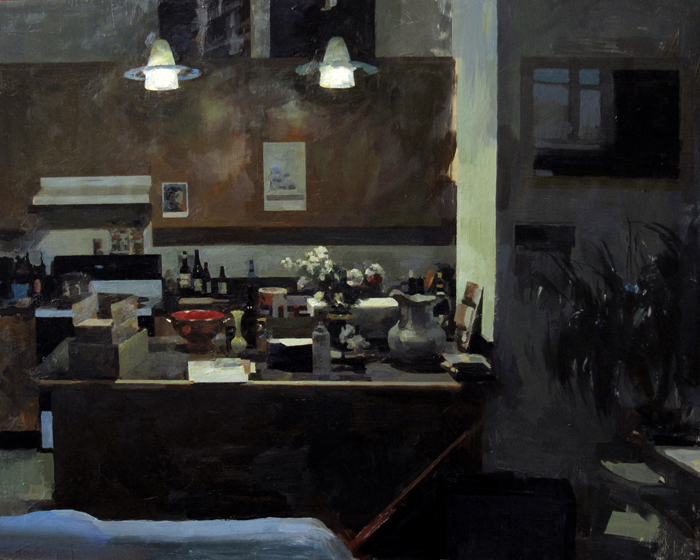 "Night Lights" by Hollis Dunlap
"Night Lights" by Hollis Dunlap
Marina Fridman: What new directions are you looking forward to exploring in the future?
Hollis Dunlap: I want to experiment more with color, make the paintings the way I want them to look instead of being too tied to what I see in front of me. I think I can retain the drawing, but experiment with the color within the more traditional drawing styles that I love. I want to come up with an idea, and base my pose of the figure or figures on that idea, something I have only really started lately.
Marina Fridman: Were you ever given a piece of advice about drawing or art in general that you will always remember?
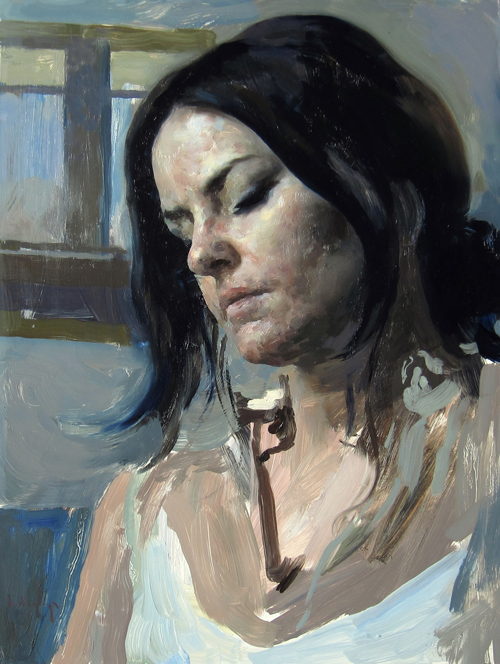 "Susan No. 2" by Hollis Dunlap
"Susan No. 2" by Hollis DunlapHollis Dunlap: My high school art teacher, Larry Golden, encouraged me to copy master drawings, and to take private painting lessons when I was in high school. This was a tremendous help and it got me through my teenage years with some self esteem.
Deane G Keller always said, "It's about the work." It was about being committed to the hours and years that it takes to become a good draftsman, and the respect and connection to manual labor.
If you look at Michelangelo's life, he always had a great respect for workers. There was that connection to the marble quarries, the laborers, the connection to the earth, the physical nature of just dealing with huge, heavy blocks of rock. I appreciate that blue collar attitude towards art, to realism, rather than the general chaos and superfluousness of the "art world" today.
I appreciated the encouragement to keep at something, and not to
give up during the inevitable frustrating nights after a painting didn't
go the way I had wanted. I've seen many students stop working just
before they start to make real progress, because unfortunately there is a
pervasive belief in our culture that someone has to "find their talent"
rather than "make their talent."
"I've seen many students stop working just before they start to make real progress, because unfortunately there is a pervasive belief in our culture that someone has to "find their talent" rather than "make their talent."
My painting teacher
David Dewey, when speaking about adding highlights in a painting, said
"make it a color," meaning even really bright tones should have a
defined color, at least in terms of modern painting. That helped me
become more attuned to modern painting, so that I could start to use
drawing as well as color in a way that I find interesting.
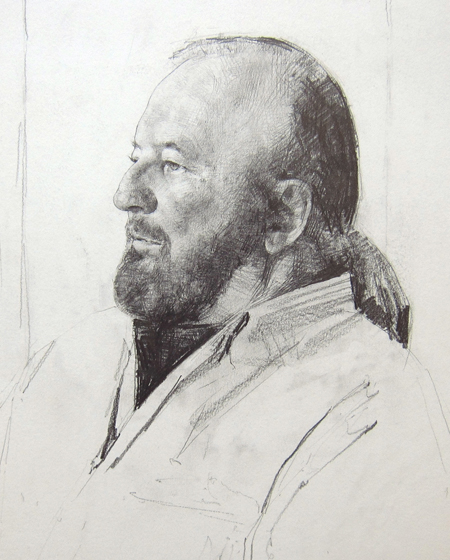 "Al 2" by Hollis Dunlap
"Al 2" by Hollis Dunlap
View more of Hollis's phenomenal artwork at HollisDunlap.com
B O N U S: Download this interview!
(Plus, access the Members-Only Drawing Resource Library!)
You may also be interested in ...
Return to Inspirational Drawings & Interviews from An Interview with Hollis Dunlap
Return to the Homepage from An Interview with Hollis Dunlap
